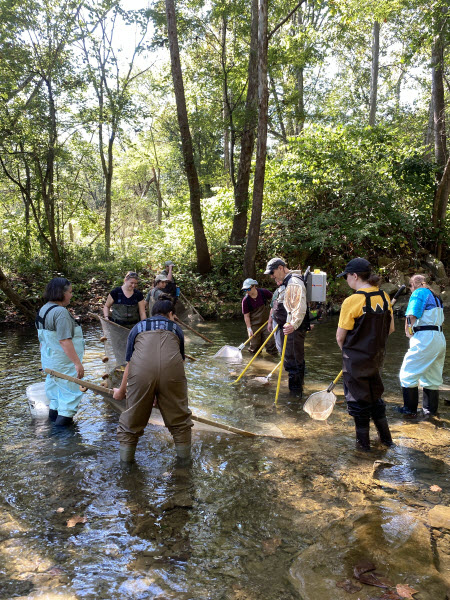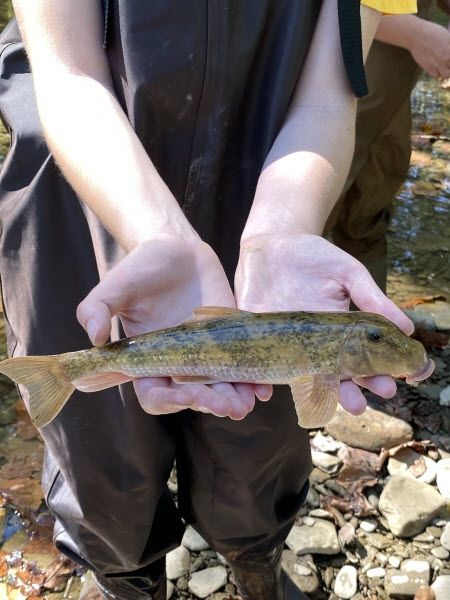How Fish are Making a Comeback in Montour Run
What Fish Say About Pollution
Montour Run has long been identified as having impaired water quality. These impairments result from metals, nutrients and sediment related to both past mining activities and stormwater runoff.
Mining related impairments include sections of the stream that are impacted by Abandoned Mine Drainage (AMD) and strip mine spoil piles. Runoff from stormwater causes erosion, siltation and sedimentation in Montour Run, and the associated water quality effects are identified as widespread issues affecting stream water quality.
Much work has been done over the last two decades to address these impairments and improve water quality and aquatic life in Montour Run, including the Milk Run AMD Treatment System completed in 2019. Milk Run is the fifth passive treatment system to be built in the watershed. As a result of these systems, along with changes in Pittsburgh International Airport’s de-icing protocols, Montour Run is now stocked with trout by PA Fish & Boat Commission.

Duquesne University students and faculty survey Montour Run along Hassam Road with seine and dip nets and a backpack electrofisher.
Fish Are Indicators of Water Quality
Fish reveal a lot of information about water quality. Knowing what species of fish live in a particular stream helps conservationists understand the overall health of the waterway and identify sources of impairment. Fish species characteristics, like pollution tolerance, breeding behaviors and feeding habits, are important to consider when analyzing fish sampling data.
Different fish can survive in different levels of pollution. For example, some fish are highly tolerant to pollution, and others require clean water. A stream is in poor condition if only pollution-tolerant fish species are identified.
Signs of healthy water include a variety of factors, such as species diversity, availability of food sources, dissolved oxygen levels and more. Overall, fish community makeup is a helpful tool when investigating stream health.

A Northern hog sucker captured and released at Hassam Road. In addition to this species, 18 others were identified.
What Fish Say About Pollution
ACCD recently worked with Duquesne University to monitor fish populations to identify improvements and work that still needs to be done in Montour Run. This work initially began as part of the Montour Run Watershed Assessment and Implementation Plan and continues to provide vital information in assessing the health of the stream.
Backpack electrofishing surveys?at two locations along Montour Run, including Cliff Mine Road and Hassam Road, revealed new information about water quality conditions. Both locations have been surveyed annually since 2018.
-
Diversity: Both sites experienced an increase in diversity, or number of species accounted for while sampling, since initial monitoring in 2018. At Hassam Road, 19 species were identified, and 17 were identified at Cliff Mine Road.
-
Pollution Tolerance: Around 25 percent of the species identified at Cliff Mine and Hassam Road, respectively, are tolerant to pollution, meaning they can survive in heavily polluted waters.
-
Insects: 68 percent of the fish species identified at Hassam Road respectively are insectivorous. A large presence of insectivorous fish species, or those that rely on bugs as a food source, indicates that a waterway is home to a large and healthy bug community.
-
Sedimentation: Large quantities of lithophilic fish, or those that lay eggs on rocky substrates, were identified at both sites, which suggests that these areas of Montour Run are not impacted by sedimentation.
-
Fish Species: Small mouth bass, darters and minnows, some of which cannot survive in polluted streams, were identified in the watershed.
Collectively, the 2021 data suggests both stretches of Montour Run are in good condition. Improvements continue throughout the length of the stream, offering hope that additional fish species will continue making their way further upstream.